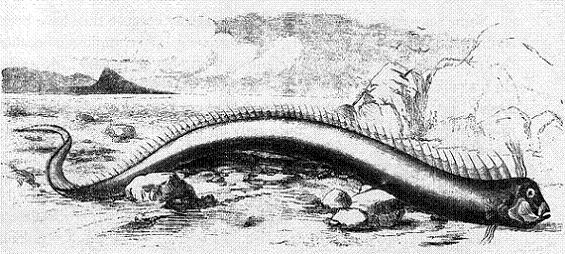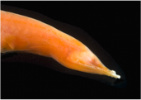Scientists have captured what they believe to be the first footage ever of the oarfish, the species likely responsible for legends told of sea serpents.
Deep in the gulf of Mexico, researchers photographed a swimming oarfish (Regalecus glesne) for several minutes. They captured the footage using a remotely operated vehicle (ROV) provided by oil companies, who are drilling in the gulf.
The oarfish was filmed swimming beneath pone of the world’s largest semi-submersible oil rigs, named Thunderhorse. It was apart of the Serpent project where oil companies loan researcher equipment.
“(It) provides a wonderful opportunity to learn more about life in the depths of the Gulf of Mexico. That we found an oarfish while doing so was a fantastic bonus,” Professor Paul Benfield told the BBC.
Scientists believe that this remarkable denizen of the deep is likely responsible for sea serpent legends. The oarfish is most often seen coming into shallow waters to die or washed up dead on beaches.
One of the world’s longest fish, the oarfish can reach lengths of 55 feet (17 meters). The fish sports dorsal fins all along its back giving it a spiny sea serpent-like appearance. They are infrequently caught by fishermen.

Oarfish that washed ashore on a Bermuda beach in 1860. The animal was 16 ft long and was originally described as a sea serpent. Illustration by: Harper’s Weekly, 1860.
News report from Discovery Networks on oarfish footage.
Related articles
Photos: Gelatinous Blobfish in danger
(01/26/2010) A species dubbed “the world’s most miserable-looking fish” is at risk of extinction due to poor fishing practices, reports The Daily Telegraph.
Video: Octopus joins elite club of tool-users with coconut sanctuary
(12/15/2009) Highly-intelligent, octopuses have been observed opening containers, navigating mazes, and escaping from cages. Now, researchers have discovered a new intellectual feat for the octopus: tool use. Once the province of humans only, over the last 50 years researchers have discovered that many species—including primates, apes, and birds—employ tools, but the octopus is the first invertebrate.
Videos and Photos: over 17,000 species discovered in waters beyond the sun’s reach

(11/23/2009) Deep, deep below the ocean’s surface, in a world of ever-present darkness, one would expect few, if any, species would thrive. However, recent expeditions by the Census of Marine Life (CoML) have found an incredible array of strange, diverse, and amazing creatures. To date a total of 17,650 species are now known to live in frigid, nearly lightless waters beyond the photic zone—where enough light occurs for photosynthesis—approximately 200 meters deep. Nearly 6,000 of these occur in even harsher ecosystems, below depths of 1,000 meters or 0.62 miles down.
New species of ghostshark discovered off California’s coast
(09/22/2009) The discovery of Eastern Pacific black ghostshark Hydrolagus melanophasma is notable for a number of reasons. It is the first new species of cartilaginous fish—i.e fish whose skeletons are made entirely of cartilage, such as sharks, rays, and skate—to be described in California water since 1947. It is also a representative of an ancient and little-known group of fish.
Three new species discovered in mile-long underwater cave

(09/01/2009) There are few places in the world more remote, more dangerous, and more unexplored than underwater caves. Cave diving—exploring these unknown abysses—has yielded many strange species unknown to science. A recent expedition to an underwater cave on Lanzarote, one of the Canary Islands, was no exception. Researchers discovered two species of worm smaller than a grain of rice and a primitive poisonous crustacean.